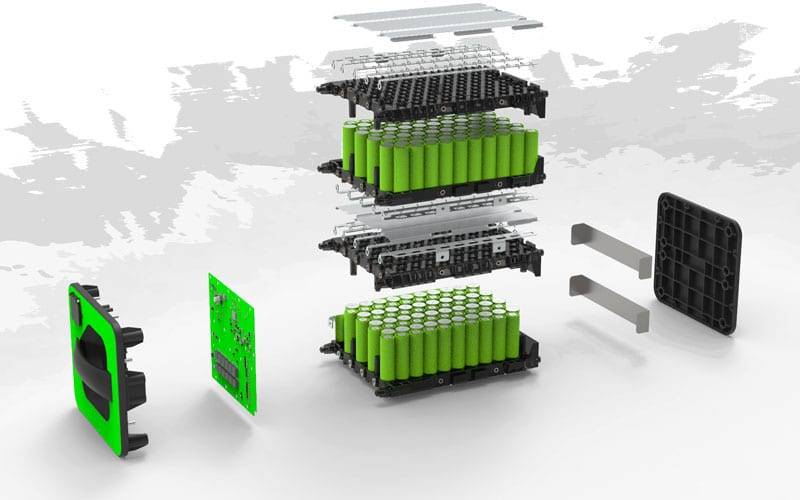What Are the Advantages of Using 2V Batteries Over 12V Batteries?
When considering battery options, many people wonder whether 2V batteries are better than 12V batteries. The choice between these two types often depends on specific application needs, performance requirements, and cost considerations. Generally, 2V batteries offer advantages in terms of scalability and efficiency, especially in large energy storage systems.
How Do 2V Batteries Compare to 12V Batteries?
2V batteries are typically used in larger configurations, such as battery banks for renewable energy systems or industrial applications. They are designed to be connected in series to achieve higher voltages, making them versatile for various setups. In contrast, 12V batteries are commonly used in automotive applications and smaller systems.Chart: Voltage Configuration Comparison
| Battery Type | Voltage per Cell | Typical Configuration |
|---|---|---|
| 2V | 2 volts | Series connection for higher voltage |
| 12V | 12 volts | Single unit or series of six cells |
What Are the Performance Benefits of 2V Batteries?
The performance benefits of 2V batteries include:
- Higher Capacity Options: Many 2V batteries come with larger amp-hour ratings, allowing for greater energy storage.
- Better Scalability: They can be easily combined to create larger battery banks without significant losses.
- Longer Lifespan: Typically, 2V lead-acid batteries, such as those used in deep-cycle applications, can last longer due to lower cycling stress when properly maintained.
Why Is Cost an Important Factor in Battery Selection?
Cost is a significant consideration when selecting between 2V and 12V batteries:
- Initial Investment: While 12V batteries may have a lower upfront cost, larger systems using multiple 12Vs can become more expensive due to the need for additional units.
- Long-Term Value: Although 2V batteries may initially cost more, their longevity and efficiency can provide better value over time, especially in high-demand applications.
Chart: Cost Analysis
| Battery Type | Average Cost per Unit | Typical Lifespan (Years) |
|---|---|---|
| 2V | $200 – $500 | 5 – 15 |
| 12V | $100 – $300 | 3 – 7 |
How Do Applications Differ Between 2V and 12V Batteries?
The applications for each type of battery vary significantly:
- 2V Batteries: Commonly used in large-scale energy storage systems, such as solar power installations or uninterruptible power supplies (UPS). They are ideal for industrial settings where high capacity and reliability are crucial.
- 12V Batteries: Typically found in automotive applications, recreational vehicles (RVs), and smaller off-grid systems. They are suitable for powering cars, boats, and small solar setups.
What Maintenance Considerations Should Be Taken into Account?
Maintenance requirements differ between the two types:
- 2V Batteries: Often require regular maintenance checks, including electrolyte levels (for flooded types) and terminal cleaning. They may also need equalization charging to ensure all cells remain balanced.
- 12V Batteries: Maintenance varies depending on the type (flooded, AGM, or gel). Flooded lead-acid batteries require regular checks on electrolyte levels, while AGM and gel types are generally maintenance-free.
When Should You Choose a 12V Battery Over a 2V Battery?
You might consider a 12V battery if:
- You need a straightforward solution for automotive or small-scale applications.
- Budget constraints make a lower initial investment more appealing.
- You prefer ease of installation without the complexity of configuring multiple cells.
Latest News
Recent trends indicate an increasing preference for lithium-ion technology, which offers advantages over both 2V and 12V lead-acid batteries, including longer lifespans and faster charging times. However, traditional lead-acid options remain popular due to their cost-effectiveness in specific applications.Editor Comment
“The choice between a 2V battery and a 12V battery ultimately depends on your specific needs,” says Dr. Michael Smith, an energy storage expert. “While 2Vs provide scalability and capacity advantages for larger systems, 12Vs offer simplicity for everyday applications.”
FAQ Section
Q1: Are there significant performance differences between 2V and 12V batteries?
A1: Yes, 2V batteries typically offer higher capacity options and better scalability compared to 12V batteries, making them suitable for large energy storage systems.Q2: Which type of battery is more cost-effective?
A2: While 12V batteries have lower upfront costs, 2V batteries may provide better long-term value due to their durability and efficiency.Q3: What applications are best suited for each type?
A3: Use 2V batteries in large-scale energy storage or industrial settings; use 12V batteries in automotive or small off-grid applications.


